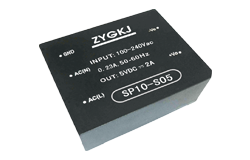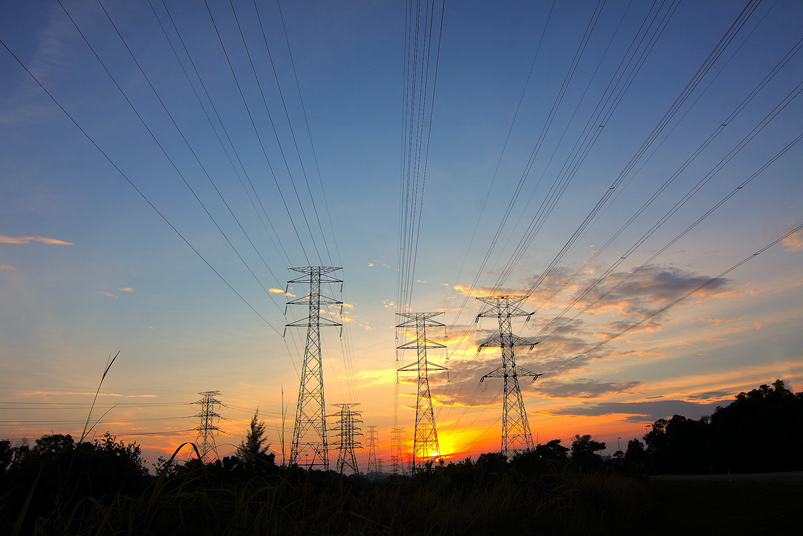nouvelles
AC-DC Power Supply: Providing Efficient and Reliable Power Conversion
Auteur: Module d'alimentation ZYG Time: 2023-5-12
An AC-DC power supply is an essential component in many electronic devices and systems. It is responsible for converting alternating current (AC) power from the mains into direct current (DC) power that can be used by electronic circuits and devices. This process of conversion is crucial for ensuring the efficient and reliable operation of a wide range of electronics, from small household appliances to large industrial machines.
One of the key advantages of an AC-DC power supply is its ability to provide a stable and regulated output voltage. This is important because electronic circuits often require a specific voltage level in order to function correctly. If the voltage is too low or too high, it can cause components to malfunction or even fail altogether. An AC-DC power supply uses various techniques such as feedback control and voltage regulation to ensure that the output voltage remains within a precise range, even in the face of fluctuations in the input voltage or changes in the load.
Another advantage of an AC-DC power supply is its efficiency. In order to minimize wasted energy and reduce the heat generated by the power supply, it is important to design it with high conversion efficiency. This means that the power supply should convert as much of the input power as possible into usable output power, while minimizing losses due to factors such as resistance and heat. Modern AC-DC power supplies typically achieve conversion efficiencies of over 90%, which helps to conserve energy, reduce costs, and improve the lifespan of the device.
Reliability is also a critical factor for AC-DC power supplies. In many applications, such as medical equipment, aerospace systems, and industrial machinery, a power supply failure can have serious consequences. To ensure reliable operation, AC-DC power supplies must be designed and manufactured with high-quality components and rigorous testing procedures. This includes features such as overvoltage protection, short-circuit protection, and thermal shutdown, which help to prevent damage to the power supply and the connected circuitry.

There are various types of AC-DC power supplies available, each with its own advantages and disadvantages. Some common types include linear regulators, switching regulators, and flyback converters. Linear regulators are simple and easy to use but are generally less efficient than other types. Switching regulators use high-frequency switching to improve efficiency but can be more complex and expensive. Flyback converters are commonly used in low-power applications and provide isolation between the input and output circuits.
In conclusion, an AC-DC power supply is an essential component in many electronic devices and systems, providing efficient and reliable power conversion. Its ability to regulate the output voltage, achieve high conversion efficiency, and ensure reliable operation makes it a critical component in a wide range of applications. By understanding the various types of AC-DC power supplies and their advantages and disadvantages, designers and engineers can choose the right power supply for their specific needs.
Précédent: Waterproof 12V AC to DC Converter
Prochain: China 120V AC to 12V DC Converter: Efficient Power Conversion Solution
les informations pertinentes
-
2023-5-19
AC-DC Switching Power Supply – A Comprehensive Guide
AC-DC switching power supplies are widely used in modern electronic devices. They convert the incoming alternating current (AC) from the power source into direct current (DC) that is required for the operation of electronic devices. These power supplies are known for their high efficiency, reliability and small size. This comprehensive guide will help you understand the basics of how switch-mode power supplies work, their applications, various types, and key parameters to consider in selecting the right one for your requirements. How do AC-DC Switching Power Supplies work? An AC-DC switching power supply works by applying a high-frequency AC input voltage (approx. 50 kHz to several MHz) to a transformer, which steps down the voltage. A bridge rectifier then converts this...
Voir les détails -
2023-12-11
650W Fully Modular Power Supply: The Perfect Choice for Efficiency and Convenience
In today's digital age, where technology is an integral part of our lives, having a reliable and efficient power supply is of utmost importance. Whether you are a professional gamer, a content creator, or simply an individual who uses their computer extensively, the 650W fully modular power supply is the perfect choice for efficiency and convenience. One of the key features of a fully modular power supply is its ability to provide the exact amount of power required by your system. Unlike traditional power supplies, which come with a fixed number of cables, a fully modular power supply allows you to connect only the cables you need. This not only reduces cable clutter inside your computer case but also ensures...
Voir les détails -
2023-5-14
Converting 110V AC to 12 Volt DC: A Step-by-Step Guide
Converting 110V AC to 12 Volt DC: A Step-by-Step Guide Converting 110V AC to 12 Volt DC is a process that is commonly used in various electronic devices such as radios, televisions, and computers. The process is simple and straightforward, but it requires the use of certain tools and equipment. In this guide, we will take you through the process of converting 110V AC to 12 Volt DC. Step 1: Gather the Required Tools and Equipment To begin with, you will need certain tools and equipment to convert 110V AC to 12 Volt DC. The following are the tools and equipment that you will require: - A transformer - A rectifier - A capacitor - A voltage regulator - A...
Voir les détails -
2023-6-2
Shining Bright with the LED Power Series
In recent years, the LED Power Series has entered the market with a bang. This series of LED lights has become increasingly popular due to its many benefits, including energy efficiency, long lifespan, and bright illumination capabilities. LED stands for Light Emitting Diode. The diode is a semiconductor device that emits light when an electric current passes through it. LEDs are known for being more energy-efficient than traditional lighting options, such as incandescent bulbs and fluorescent lights. LED lights have a low wattage requirement and can save up to 80% on energy costs compared to traditional lighting. Another benefit of the LED Power Series is its long lifespan. LED lights can last up to 25 times longer than traditional lighting...
Voir les détails -
2023-5-16
Converting 110V AC to 12V DC: A Guide
Many electronic devices that we use in our daily lives require a direct current (DC) power supply to function. However, the power supply in our homes provides an alternating current (AC) voltage of 110V. Therefore, to power these devices, we need to convert the AC voltage to DC voltage. In this guide, we will discuss the steps needed to convert 110V AC to 12V DC. Step 1: Determine the Load Requirements Before you start the conversion process, you need to determine the load requirements of the device you want to power. This includes the voltage and current rating of the device. For example, if the device requires a 12V DC power supply with a current rating of 1A, you need...
Voir les détails -
2023-8-2
High quality Exploring the World of Electric Power: An Engaging English Series
Electricity is a fundamental part of our lives, powering our homes, businesses, and even our modes of transportation. It is a fascinating and ever-evolving field that continues to shape our modern world. In this series, we will dive into the world of electric power, exploring its history, technology, and impact on society. Chapter 1: The Birth of Electricity Electricity was discovered by scientists in the late 18th century, but it wasn't until the early 19th century that it started being harnessed for practical use. We will delve into the key figures and milestones that led to the birth of electric power, such as Alessandro Volta's invention of the first battery and Michael Faraday's discovery of electromagnetic induction. Chapter 2: The...
Voir les détails


















